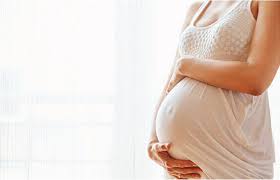The Role of Yoga and Physical Exercises in IVF
The Role of Yoga and Physical Exercises in IVF: Benefits and Limitations
Introduction
In-vitro fertilization (IVF) is a complex and emotionally challenging journey for couples struggling with infertility. Many turn to holistic approaches like yoga to improve their chances of success. While Yoga and Physical Exercises offers numerous benefits, it is essential to understand its limitations in the IVF process. This blog explores where yoga helps in IVF and where it may not be effective.
How Yoga and Physical Exercises Helps in IVF?
While Yoga and Physical Exercises cannot replace medical treatments, it can support IVF success in several ways:
- Reduces Stress and Anxiety
IVF can be stressful, and stress releases cortisol, which may negatively impact fertility hormones.
It helps reduce stress through deep breathing, meditation, and mindfulness, promoting a calm and positive mindset. - Improves Blood Circulation to Reproductive Organs
Certain yoga poses enhance blood flow to the uterus and ovaries, ensuring better oxygenation and nutrient supply.
Poses like Butterfly Pose (Baddha Konasana) and Legs-Up-the-Wall (Viparita Karani) support reproductive health. - Balances Hormones
Yoga and Physical Exercises regulates the endocrine system, which controls reproductive hormones such as estrogen, progesterone, and insulin.
Women with PCOS (Polycystic Ovary Syndrome) or irregular cycles may benefit from exercise’s hormone-balancing effects. - Enhances Implantation Potential
A relaxed body and mind create a favorable uterine environment for embryo implantation.
Gentle stretching and restorative yoga postures can help improve the uterine lining. - Supports Emotional Well-being During IVF Cycles
IVF can be emotionally draining, with multiple hormonal treatments and waiting periods.
Yoga and Physical Exercises encourages emotional stability, self-acceptance, and positivity, making the process easier to navigate.
Where Yoga and Physical Exercises is Not Effective in IVF?
Despite its benefits, yoga has limitations in treating infertility. It cannot replace medical interventions in the following cases:
- Structural Reproductive Issues
Blocked Fallopian Tubes: If tubes are completely blocked, only IVF or surgical treatment can help.
Uterine Fibroids or Polyps: Large fibroids or growths affecting implantation require medical intervention. - Genetic and Chromosomal Abnormalities
Yoga and Physical Exercises cannot correct genetic disorders that may cause repeated IVF failures.
PGT (Preimplantation Genetic Testing) is required to check embryo viability. - Severe Egg or Sperm Quality Issues
If AMH (Anti-Müllerian Hormone) is very low, It cannot increase egg count.
Severe sperm DNA fragmentation or azoospermia (zero sperm count) needs advanced fertility treatments. - Autoimmune Disorders Affecting Implantation
Conditions like lupus or antiphospholipid syndrome can cause repeated IVF failures.
Yoga and Physical Exercises can reduce inflammation but cannot prevent immune attacks on embryos. - Age-Related Infertility
Yoga cannot reverse age-related ovarian decline.
Women over 40 may require egg donation or advanced fertility treatments.
Conclusion
Yoga and Physical Exercises is a valuable supportive therapy that enhances IVF success by improving mental well-being, hormone balance, and blood circulation. However, it cannot treat medical conditions like structural blockages, genetic issues, or poor egg/sperm quality. The best approach is to combine yoga with evidence-based fertility treatments for optimal success.
https://www.drabhamajumdar.com


